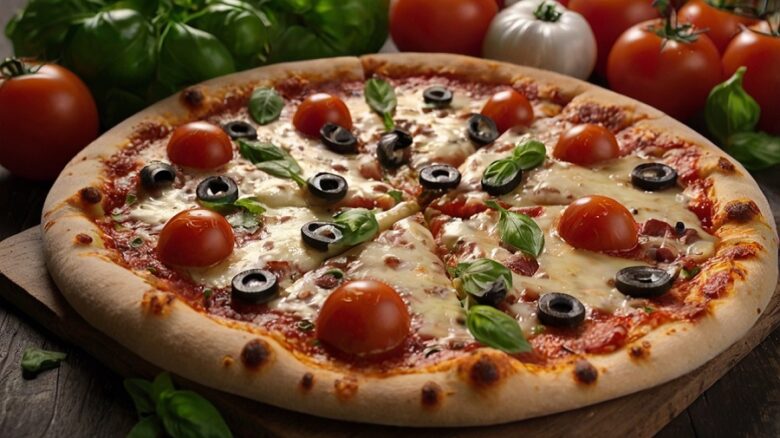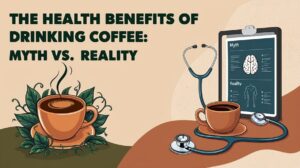Pizza is one of the most popular and loved foods around the world. Whether you’re enjoying it as a late-night bite, at a party, or during a family dinner, pizza always brings people together. But behind all that melted cheese and tasty sauce, there’s a common question people ask: Is pizza actually healthy?
The truth is, there’s no clear yes or no. Pizza can be an unhealthy treat-or it can be a balanced and wholesome meal. It all depends on the ingredients you choose and how much you eat.
In this article, we’ll talk about what makes some pizzas less healthy, how you can still enjoy pizza without feeling guilty, and smart alternatives that taste just as good while being better for your health.
The Anatomy of a Slice
To understand pizza’s health impact, it’s important to look at its components individually. Each layer-from the crust to the toppings-plays a role in determining whether your pizza leans more toward indulgence or nutrition.
Crust
Most pizzas come with a refined white flour crust, which is high in simple carbohydrates and low in fiber. This type of crust is digested quickly, often causing spikes in blood sugar levels and leading to hunger shortly after eating. In contrast, whole wheat, multigrain, cauliflower, or quinoa crusts offer more complex carbs, fiber, and nutrients. These alternatives can improve satiety, stabilize blood sugar, and support digestive health.
Sauce
Classic tomato sauce is typically rich in lycopene, a powerful antioxidant linked to heart health and reduced risk of certain cancers. However, many commercial sauces contain added sugars, preservatives, and high sodium levels, which can diminish the sauce’s health benefits. Opting for homemade or low-sodium versions can help you retain the nutritional advantages of tomato-based sauces.
Cheese
Cheese is one of the most calorie-dense ingredients in pizza. While it provides valuable nutrients like calcium, protein, and vitamin B12, it’s also high in saturated fats and sodium. Excessive cheese can contribute to elevated cholesterol and increased calorie intake. Choosing lighter cheeses (such as part-skim mozzarella or plant-based options) and using smaller quantities can help strike a better nutritional balance.
Toppings
Toppings are where you can truly customize the health profile of your pizza. Processed meats like pepperoni, bacon, and sausage are high in saturated fats, cholesterol, and sodium, which may increase the risk of heart disease when consumed frequently. On the other hand, vegetable toppings-such as bell peppers, onions, mushrooms, spinach, and tomatoes-are rich in fiber, antioxidants, and vitamins. They add flavor, texture, and essential nutrients without piling on excess calories or unhealthy fats.
When Does Pizza Become Unhealthy?
Pizza in itself isn’t the villain-it’s the way we make and consume it that determines whether it’s healthy or not. Here are a few factors that can make pizza a not-so-healthy choice:
1. High Calorie Load
Many pizzas are loaded with cheese, thick crusts, and high-fat meats, resulting in calorie-heavy slices. When paired with soda or other sides, the meal can exceed daily calorie requirements in a single sitting.
2. Too Much Sodium
Pizzas, especially frozen or fast-food versions, often contain high amounts of sodium due to the cheese, sauce, and processed toppings. Excess sodium intake is linked to high blood pressure and heart issues.
3. Unhealthy Fats
Saturated and trans fats in full-fat cheese and meats can raise cholesterol levels and increase the risk of heart disease.
4. Low Fiber and High Glycemic Index
Refined flour crusts contribute to blood sugar spikes and crashes, leaving you feeling hungry again soon. The lack of fiber also impacts digestion and satiety.
Can Pizza Be Healthy?
The good news is-yes, pizza can absolutely be healthy! With a few mindful changes and choices, pizza can turn from a guilty indulgence into a balanced, enjoyable meal.
Choose the Right Crust
Swap the usual white flour crust for:
- Whole wheat crust: More fiber and complex carbs
- Cauliflower crust: Low-carb and gluten-free
- Quinoa crust: Rich in protein and fiber
Lighten the Cheese Load
Instead of piling on cheese, go for:
- Part-skim mozzarella or plant-based alternatives
- Just enough cheese to enjoy the flavor without excess fat
- Nutritional yeast (for a cheesy flavor without calories)
Focus on Veggie Toppings
Add color and nutrients to your pizza with:
- Bell peppers, mushrooms, spinach, onions, tomatoes, olives
- Roasted veggies for more flavor
- Fresh greens like arugula added after baking
Choose Lean Proteins
Instead of processed meats, top your pizza with:
- Grilled chicken, turkey, or tofu
- Legumes or beans (for plant-based options)
- Seafood like shrimp or tuna
Control Portion Sizes
Stick to 1–2 slices and pair your pizza with:
- A side salad
- A bowl of vegetable soup
- Roasted veggies or steamed greens
Make It at Home
Homemade pizzas let you:
- Control ingredients and quantities
- Avoid preservatives and excess sodium
- Experiment with new flavors and healthier choices
Healthier Pizza Alternatives You’ll Love
Craving pizza but want to make smarter choices? These pizza-inspired dishes are nutritious and delicious:
Cauliflower Crust Pizza
Gluten-free and lower in carbs, this crust offers fiber and nutrients with fewer calories. Great for keto and low-carb diets.
Zucchini Pizza Boats
Cut zucchinis lengthwise and stuff them with sauce, veggies, and light cheese. Bake until tender for a healthy, bite-sized snack.
Portobello Mushroom Pizzas
Large mushroom caps make a hearty, low-carb crust alternative. Add fresh sauce, spinach, and light cheese for a flavorful twist.
Pita or Tortilla Pizzas
Use whole-grain pita or tortilla as a thin crust base. Perfect for quick, portion-controlled pizzas with endless topping options.
Quinoa Pizza Crust
Packed with protein and naturally gluten-free, this crust is great for a balanced, nutrient-rich pizza base.
Why You Can Still Eat Pizza on a Healthy Diet
Believe it or not, pizza can support your health goals when done right. Here’s how:
- Satisfies cravings without guilt: Allowing yourself a healthy version of your favorite food can prevent binge eating later.
- Rich in essential nutrients: Tomatoes (lycopene), cheese (calcium, protein), veggies (fiber and vitamins)-pizza has it all when well-balanced.
- Flexible and customizable: From vegan to keto to gluten-free, there’s a pizza option for every dietary lifestyle.
Tips for Ordering Pizza the Healthy Way
When dining out or ordering delivery, try these smart choices:
- Ask for thin crust: Fewer calories and carbs
- Go light on cheese: Or try no cheese at all
- Add veggies: Ask for extra vegetables as toppings
- Avoid stuffed crust or deep dish: These are higher in fats and calories
- Limit high-fat meats: Skip pepperoni, sausage, and bacon
- Split the pizza: Share with others and add a healthy side
Final Thoughts: Pizza in Moderation = Pizza Without Guilt
Pizza is not your enemy. It’s a food that brings people together, sparks joy, and satisfies cravings. The key is to make mindful choices, enjoy in moderation, and explore healthier options that still taste amazing.
You don’t have to give up pizza to live a healthier lifestyle, you just have to eat it smarter.
FAQs
Q: Can I eat pizza while on a diet?
A: Just choose healthier ingredients, control your portion size, and enjoy it in moderation.
Q: What kind of pizza is best for weight loss?
A: The best pizza for weight loss is one with a thin whole wheat or cauliflower crust, light cheese, lots of vegetables, and lean protein like grilled chicken.
Q: Is veggie pizza healthy?
A: Yes, veggie pizza is healthy because it’s lower in fat and calories and packed with vitamins, fiber, and nutrients from the vegetables.
About the Author
Laura is a Digital Marketing Specialist with a strong focus on building meaningful customer relationships with high-impact content strategies. Years of experience in the content marketing world, she brings storytelling, creativity, and SEO expertise to every piece she creates. As a professional Content Creator at Luigi’s Pizzarama II, Laura is passionate about connecting the community to great food experiences one slice at a time.




